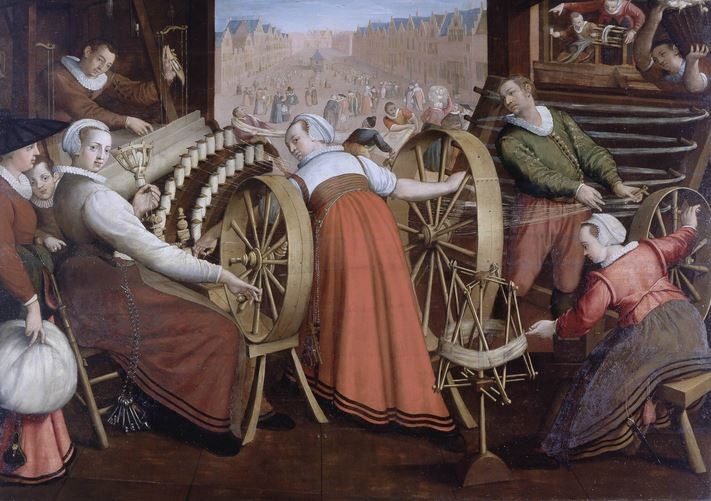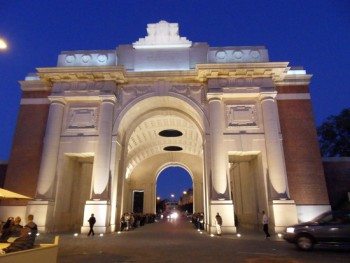
Ypres is located in the Flemish province of West Flanders. Ieper is the spelling by which the local (dutch-speaking) people use for the town but in Britain it is more commonly referred to by the French spelling of its name, Ypres.
This is a throw-back to the First World War when French was the only official language of Belgium and this French spelling of the name was how the town appeared in documents, maps and newspapers at that time. It is also the reason why British soldiers used to comically refer to Ypres as Wipers.
Today, Ypres, together with its surrounding villages, is home to around 34,900 inhabitants.
[pt_row element_name=”Row”][pt_column width=”1/1″][pt_core_map element_name=”Google Map” height=”400px” address=”Ypres” zoom=”8″][/pt_core_map][/pt_column][/pt_row][pt_section element_name=”Section” width=”boxed” bg_color=”” bg_image=”” padding=”10px,0px,10px,0px” margin=”,,,” extra_class=””]
A Brief History
Ypres is an ancient town, known to have been raided by the Romans in the first century BC. It is first mentioned by name in 1066 and is probably named after the river Ieperlee on the banks of which it was founded.

During the Middle Ages, Ypres was a very prosperous Flemish city; its population during the 13th century was around 40,000 which was at the time when the famous Cloth Hall was built. As the third largest Flemish City after Ghent and Bruges, Ypres played an important role in advancing the textile industry and was renowned for its linen trade especially with England, where it was known as Flemish Cloth and mentioned in the Canterbury Tales.
In 1561 Ypres became the seat of the new Diocese of Ypres and Saint Martin’s Church was elevated to being a Cathedral.
In 1678, Ypres was captured by Louis XIV of France and remained under French control until it was returned to the Spanish Crown in 1697 after the Treaty of Ryswick. During this period of French control, the Marquis de Vauban, a renowned Military Engineer and Marshal of France, constructed extensive fortifications of which much of his work remains to this day.
Interestingly, the British Army Commander during the War of Spanish Succession (1701-1714), the Duke of Marlborough planned to capture Ypres but decided against it because, firstly, the extent and strength of its fortifications and, secondly, because he was fearful of disease spreading through his army while encamped on the poorly drained land surrounding Ypres.
In 1713, it became part of the Austrian Netherlands , a domain owned by the Habsburg family. Under their rule, in 1782 Emperor Joseph II ordered that parts of the walls should be torn down. This destruction was only ever partly repaired and it made it easier for the French to capture the city again in 1794 during the War of the First Coalition.
Subsequently, Ypres became part of the United Kingdom of the Netherlands and then, from 1830, it became part of Belgium.

Ypres became the cornerstone of the British-held section of the Western Front during World War I (read more).
Such was the devastation wrought upon Ypres during this period, the Cloth Hall and Cathedral that you see today ares an accurate reconstruction of the ones that were completely destroyed during that war.
Tourist Destination
Ypres is a popular destination for many British tourist. They find a warm welcome there; English is generally well-spoken in a town centre that has decent hotels, good restaurants and plenty of history.
There is plenty to see in what is historically called the Ypres Salient:
- The Menin Gate is situated in the Town’s Walls close to the city centre,
- There is the nightly ceremony of Last Post performed by local Fire Fighters in memory of British and Commonwealth soldiers lost in the First World War.
- Visit the largest Commonwealth War Grave at Tyne Cot which is situated between Ypres and Passchendaele.
- There are untouched trenches at Hill 62, left undisturbed since the war ended.
All of this is not only fascinating but also testimony to the vital role that Ypres played during four years of struggle in world War I.
Return to Belgium Holiday & Travel Page
